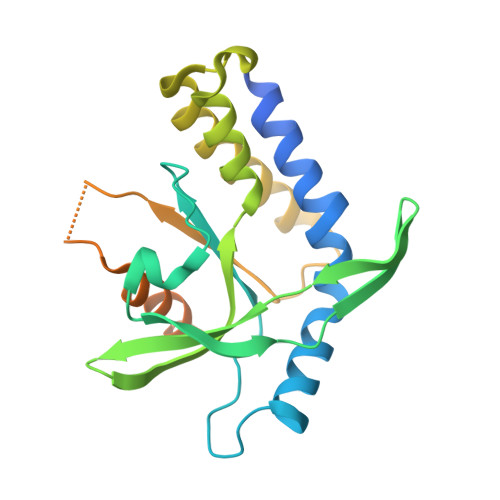Cyclic GMP-AMP Containing Mixed Phosphodiester Linkages Is An Endogenous High-Affinity Ligand for STING.
Zhang, X., Shi, H., Wu, J., Zhang, X., Sun, L., Chen, C., Chen, Z.J.(2013) Mol Cell 51: 226-235
- PubMed: 23747010
- DOI: https://doi.org/10.1016/j.molcel.2013.05.022
- Primary Citation of Related Structures:
4KSY - PubMed Abstract:
The presence of microbial or self DNA in the cytoplasm of mammalian cells is a danger signal detected by the DNA sensor cyclic-GMP-AMP (cGAMP) synthase (cGAS), which catalyzes the production of cGAMP that in turn serves as a second messenger to activate innate immune responses. Here we show that endogenous cGAMP in mammalian cells contains two distinct phosphodiester linkages, one between 2'-OH of GMP and 5'-phosphate of AMP, and the other between 3'-OH of AMP and 5'-phosphate of GMP. This molecule, termed 2'3'-cGAMP, is unique in that it binds to the adaptor protein STING with a much greater affinity than cGAMP molecules containing other combinations of phosphodiester linkages. The crystal structure of STING bound to 2'3'-cGAMP revealed the structural basis of this high-affinity binding and a ligand-induced conformational change in STING that may underlie its activation.
Organizational Affiliation:
Department of Molecular Biology, University of Texas Southwestern Medical Center, Dallas, TX 75390-9148, USA.















